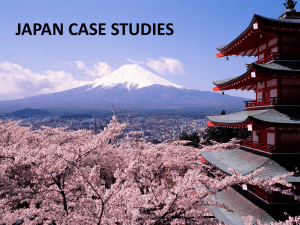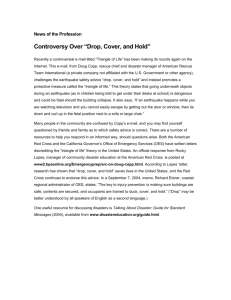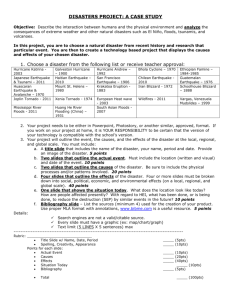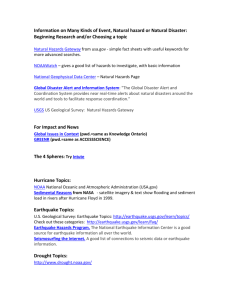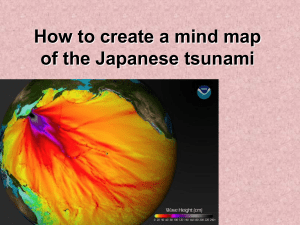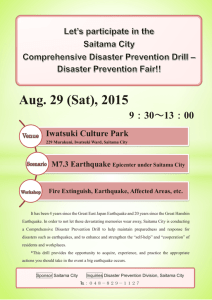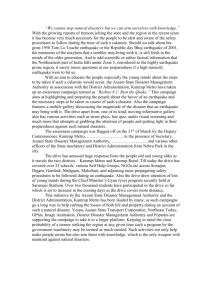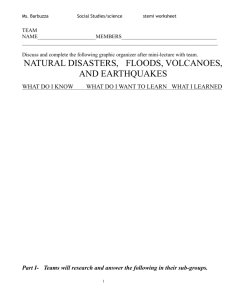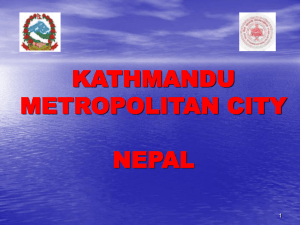Nomination Form - IIT
advertisement
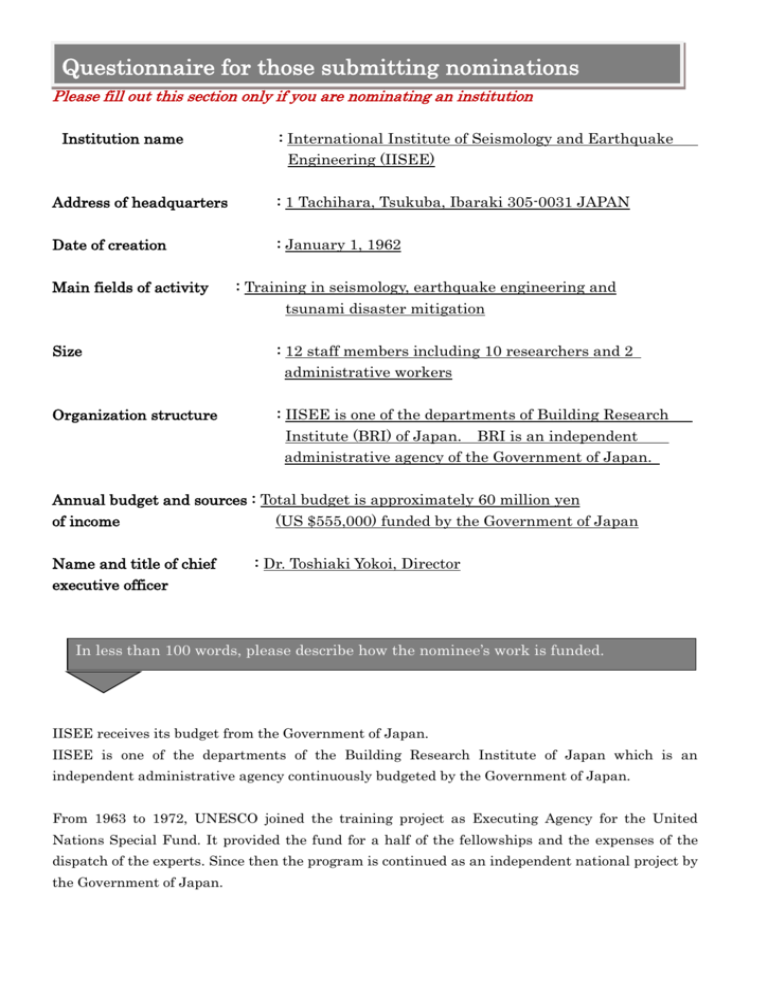
Questionnaire for those submitting nominations Please fill out this section only if you are nominating an institution Institution name : International Institute of Seismology and Earthquake Engineering (IISEE) Address of headquarters : 1 Tachihara, Tsukuba, Ibaraki 305-0031 JAPAN Date of creation : January 1, 1962 Main fields of activity : Training in seismology, earthquake engineering and tsunami disaster mitigation Size : 12 staff members including 10 researchers and 2 administrative workers Organization structure : IISEE is one of the departments of Building Research Institute (BRI) of Japan. BRI is an independent administrative agency of the Government of Japan. Annual budget and sources : Total budget is approximately 60 million yen of income Name and title of chief executive officer (US $555,000) funded by the Government of Japan : Dr. Toshiaki Yokoi, Director In less than 100 words, please describe how the nominee’s work is funded. IISEE receives its budget from the Government of Japan. IISEE is one of the departments of the Building Research Institute of Japan which is an independent administrative agency continuously budgeted by the Government of Japan. From 1963 to 1972, UNESCO joined the training project as Executing Agency for the United Nations Special Fund. It provided the fund for a half of the fellowships and the expenses of the dispatch of the experts. Since then the program is continued as an independent national project by the Government of Japan. In less than 400 words, please describe the remarkable and innovative effort carried out by the nominee to reduce the impact of disasters and build disaster resilience under the theme “Shaping the Future.” Who is shaping the future? It’s wisdom and initiatives of the people. As the 1997 Award Laureate, I am pleased to nominate the International Institute of Seismology and Earthquake Engineering (IISEE) for Sasakawa Award for Disaster Risk Reduction. Over the last about 50 years, IISEE has offered international training program in seismology, earthquake engineering and tsunami disaster mitigation to scientists and engineers mainly of core governmental entities from earthquake prone countries so as to develop earthquake science and technology. As of 2014, 1,653 participants from 99 countries attended the program. The strategy underlying is to foster technical experts who work for investigating the nature of earthquakes and tsunami, and for preventing the collapse of buildings and houses, the two major causes of human loss in those disasters as shown, for example, in China in 2008 and in Japan in 2011. In early 1960’s, IISEE, its strategy and activities were established by the human wisdoms, that were collaborative efforts among the leading researchers and governmental officers of Japan and the wisdoms of the world noticed simultaneously the importance of the training. For almost a decade from 1963 UNESCO provided the fund and the dispatch of experts. Since then the IISEE graduates flourished over the Earth such as university professors, directors of institutes and governmental officers related to the earthquake disasters. They foster younger generations, make disaster risk reduction policy and pursue the resilience. Through their activities their wisdom spread and root to their own land, for example, Prof. J. Kuroiwa Horiuchi of Peru, a former Laureate; Dr. Harsh Gupta, an ex- Secretary to Government of India. Today in almost all earthquake prone countries, IISEE’s ex-Alumni play influential roles for seismic observation, hazard/risk assessment, vulnerability reduction, control of construction, strengthening of buildings, education and dissemination for earthquake disaster risk reduction. Younger exAlumni are found in scenes of post disaster field survey and disaster recovery for almost all damaging earthquakes, for example, in Algeria in 2003, and also in risk reduction projects in developing countries. Some of them work in national government and work to create and improve their building codes. Others in city offices, for example, in Kathmandu, to make communities safer with their people providing new insight and knowledge gradually and concretely. IISEE enormously contributed to shape the future for people through human resource development for developing countries. I believe earthquake disaster risk will be sufficiently reduced and resilient societies will be realized by its activities.

